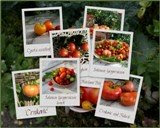
 KING EDWARD (VII)
KING EDWARD (VII)
History of a great spud
It was developed by John Butler of Scotter Lincolnshire and introduced to Britain in 1902. It is one of the oldest surviving varieties in Europe. The Coronation of King Edward VII in 1902 coincided with the introduction of this variety of potato and its name is believed to originate as a ‘commemoration’ of this occasion.
Appearance is everything
This one is a beauty! King Edward potato is predominately faire skinned with lovely pink colouration. Easy recognize among all the other potatoes in the market. It is mostly oval in shape with and shallow eyes. The plant is upright and tall like an ordinary potato plant with numerous stems and rather small green leaves. The King Edward’s flower is redish/purple with white tipped petals and they generally fall off before the harvest.

I King fit for a Duchess and smooth as satin
Pommes duchesse
Ingredients: 8-10 potatoes King Edward/Idaho boil and peel
2 egg yolk
2-3 tbl butter
salt and pepper to taste
...more recipes with the KING
Recipes for Kartoffelknödeln a German dish.
Leif Mannerström’s recipe Kroppkakor a Swedish old Rustic dish.
Irish Champ 8 medium King Edward/Idaho potatoes, 1/2 cup milk, 5 tablespoon butter, a bunch of spring onions, chopped. and this is how you do it. Peel and cut potatoes and boil in salted water until tender. Drain and mash slightly. In a small pan, heat milk and butter until butter is melted. Add chopped spring onions. Fold mixture into the potatoes until well blended. For 6 people.
Read about more great ABC Wednesday's K here.
TYRA







 Iris florentina
Iris florentina 






 Ops who is what? The Garden Gnome! wikipedia's gnome
Ops who is what? The Garden Gnome! wikipedia's gnome

































